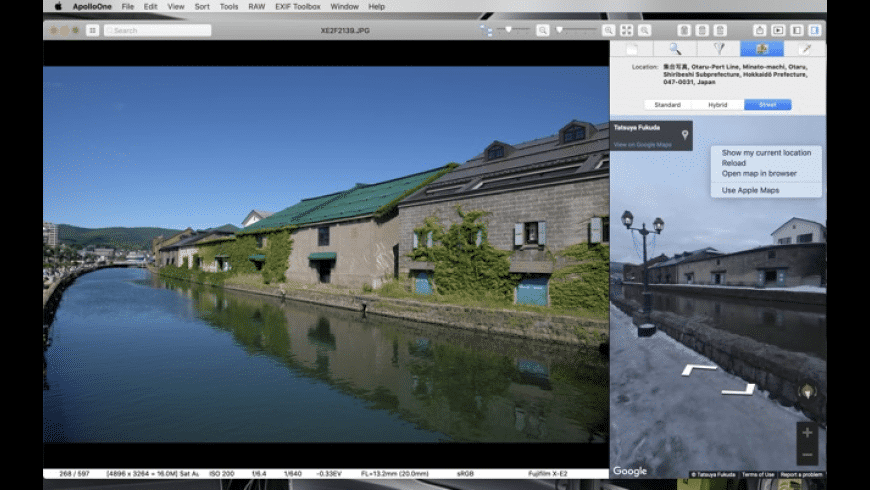What does ApolloOne - Photo Video Viewer do? Designed from the ground up as a fast, efficient and feature rich media viewer. ApolloOne uses advanced Operating System features such as multi-threading, Grand Central Dispatch, and Core Image graphics to ensure app responsiveness. HEADLINE FEATURES: 1.

- Introducing ApolloOne A photo and video viewer created by photographer for photographers High performance photo viewer View photos at 26fps (16MP images using late-2015 MacBook Pro).
- Apollo 1 was to be the first manned mission and, although it would not travel to the moon itself, it was intended to test important technologies in Earth orbit with Virgil “Gus” Grissom, Edward White and Roger Chaffee on board.
I think the best plan at this stage is to acquire as many source versions of the mono track as are available, lay them up side by side and attempt to create a composite using the best elements of each.
Currently, I am in possession of one source - from a DVD boot, quite well crafted, with video sourced from the Definitive or 'Faces' version and 3 soundtrack options: the 6-track fold down that accompanied the video source, Dolby Stereo matrixed version, and original mono.
Can anybody identify this DVD version for me and pin down which source the mono tracks were culled from?
Thanks
Apollo Onemain
Sounds like the original EditDroid ANH disc from a few years ago. Some ways to tell are: Pre-ANH crawl, front cover says 'The Original Edition' at the top, and back cover has a UPC code (sort of an Easter Egg, I'm told). As for the mono source, IIRC it's from the Pre-ANH mono VHS that most around here seem to know about, although it sounds like it's been cleaned up some.
From left to right: Edward H. White II, Virgil I. Grissom, and Roger B. Chaffee.
Following the success of the Mercury and Gemini missions in the 1960’s, NASA set about planning a series of manned missions to the Moon that would become known as the Apollo missions, under direction of John F. Kennedy to land a man on the moon by 1970. Apollo 1 was to be the first manned mission and, although it would not travel to the moon itself, it was intended to test important technologies in Earth orbit with Virgil “Gus” Grissom, Edward White and Roger Chaffee on board. Tragically, however, the spacecraft was destroyed in a cabin fire during a launch pad test 47 years ago on 27 January 1967.
Each of the three astronauts had been influential during NASA’s space exploration program in the run-up to Apollo 1. Gus Grissom was the second American in space aboard Liberty Bell 7, the second Project Mercury flight, in 1961. He later became the first American to fly in space twice, piloting the Gemini 3 spacecraft in orbit in 1965.
Edward White was the first American to walk in space during the Gemini 4 spaceflight, also in 1965, when he spent 36 minutes outside the spacecraft.
Roger Chaffee was the only one of the three who had not flown in space before. He was chosen in NASA’s third pool of astronauts in 1963 and served as capsule communicator on the ground alongside Grissom for White’s Gemini 4 mission.
The Apollo 1 crew are pictured here during water egress training Saac gta sa. 22.1 disclosure pdf.
All three astronauts contributed to the success of NASA’s manned space activities throughout the 1960s. It was with great tragedy, therefore, that they became the first casualties of the American space programme. On 27 January 1967 Apollo 1 was sitting on the launch pad atop a Saturn 1B rocket at Cape Canaveral Air Force Station Launch Complex 34, the precursor to the Saturn V. It was set to perform a “plugs-out” test, during which both the launch vehicle and the spacecraft were not loaded with fuel and all pyrotechnic systems were disabled. The task was merely to prepare Apollo 1 for its launch on 21 February 1967 by running through various system procedures.
Suddenly, at 18:30:54 local time (23:30:54 GMT), an unidentified electrical arc ignited the Command Module’s pure, high-pressure oxygen atmosphere that was being used to replicate conditions in orbit. The fire engulfed the interior capsule and the astronauts’ efforts to open the hatch and escape were in vain. Less than a minute later all three had perished.
The disaster prompted a comprehensive review from NASA, which resulted in a number of design changes to the Apollo spacecraft to significantly improve its safety. The deaths of these three talented astronauts provided an important reminder of the perils of manned space exploration in an age where the desire to send mankind to the stars was second to none. Amongst a number of memorials, geographical landmarks on the Moon and Mars bear the names of the three Apollo 1 astronauts as part of their lasting legacy.
Apollo One Crew

Images courtesy of NASA
Apollo One Crew
Uline s 3196. Tags: Apollo 1, crew, fire, Moon, NASA, programme, space

